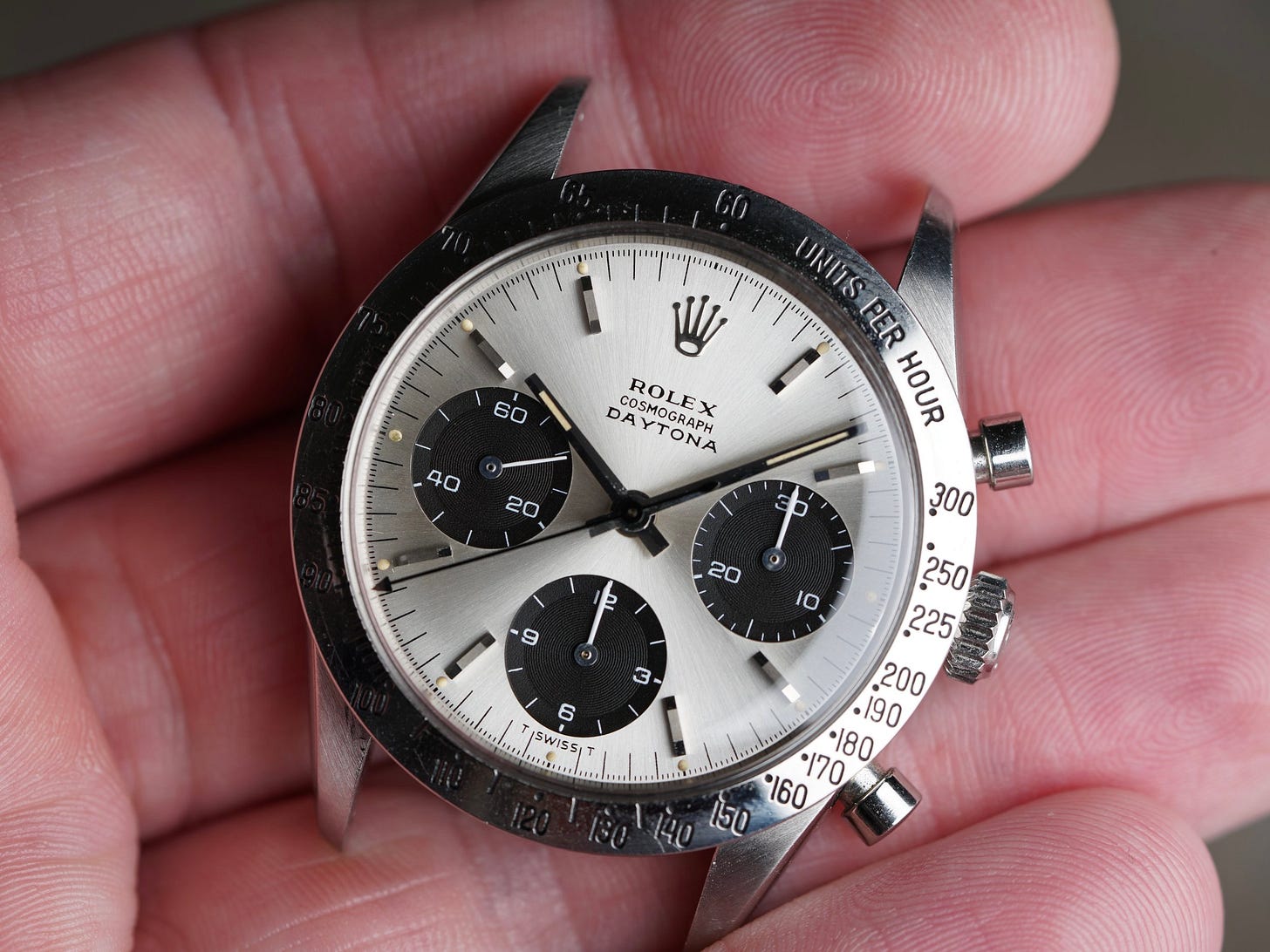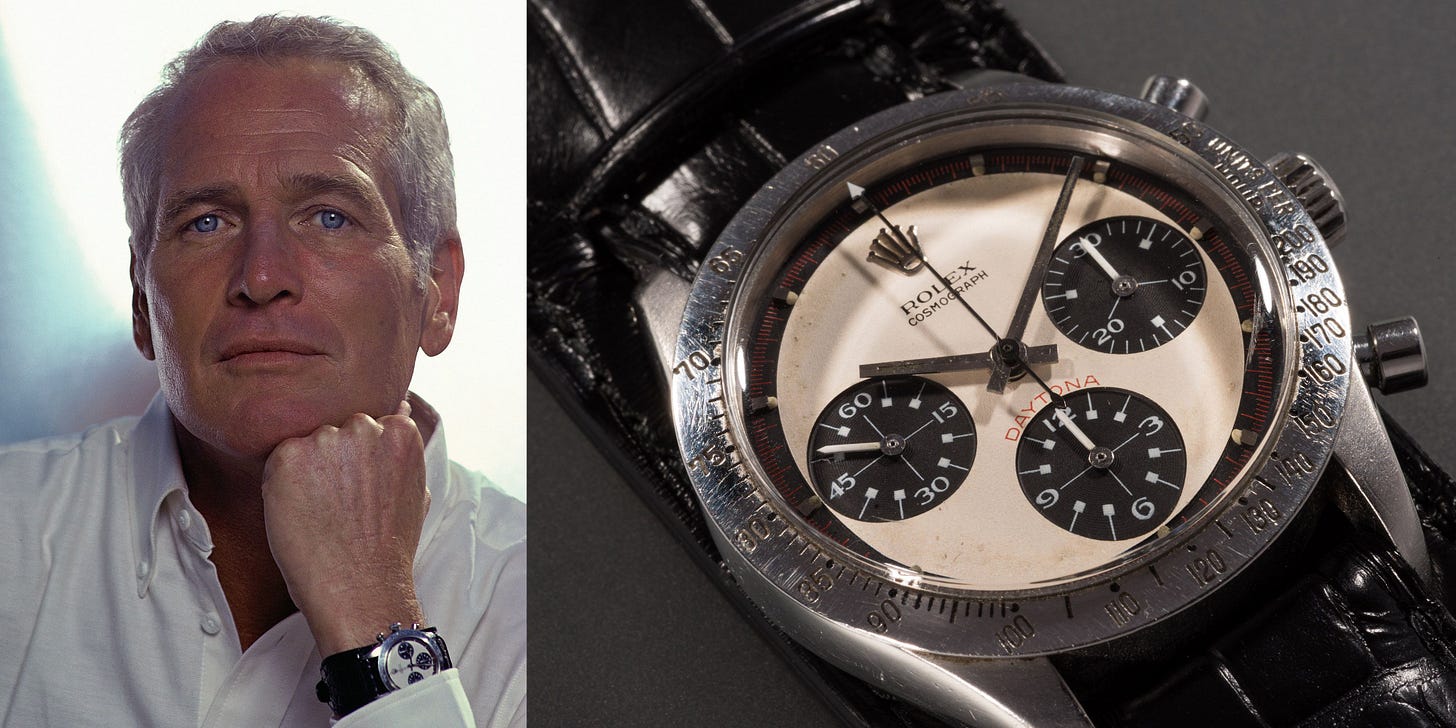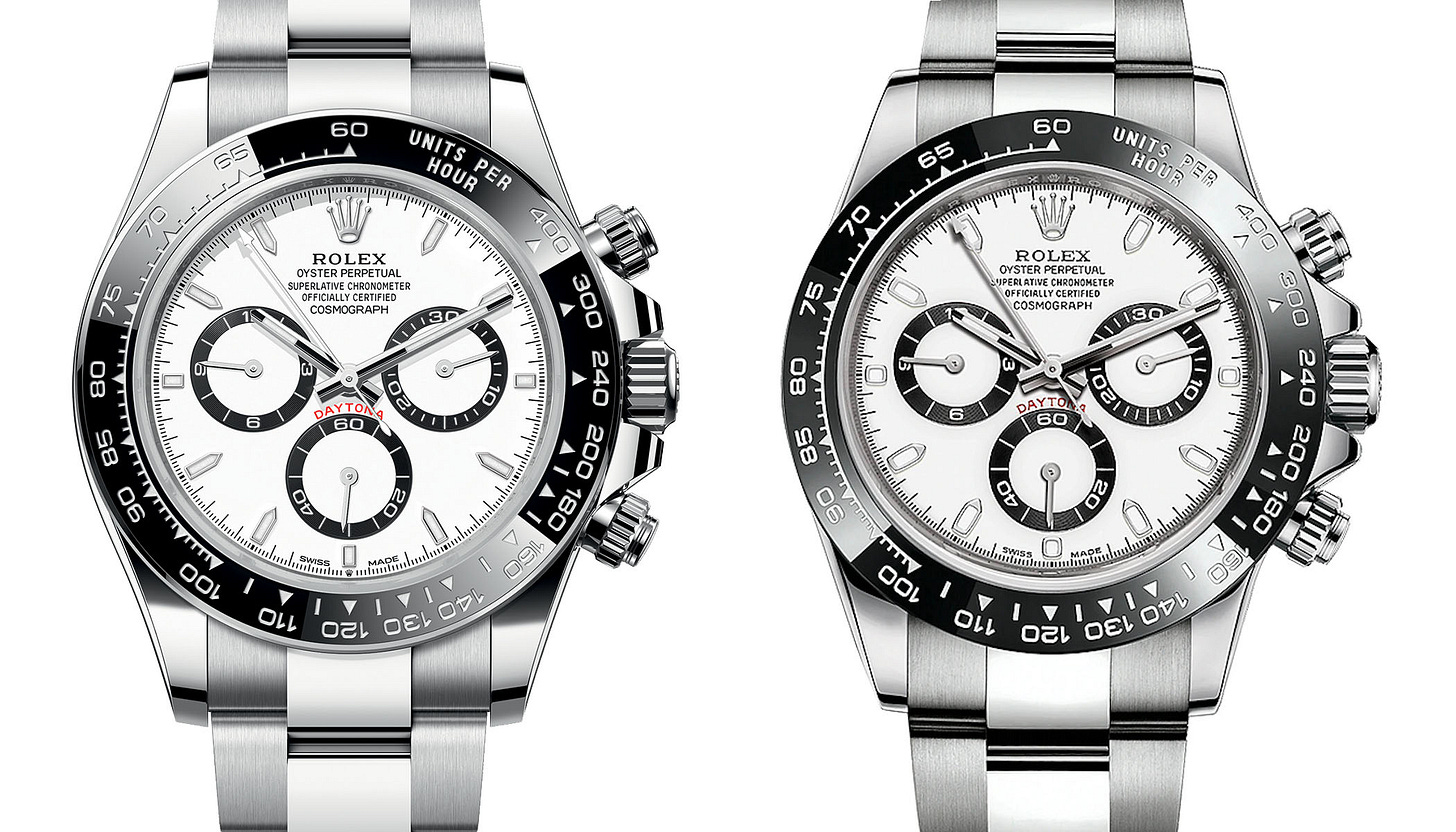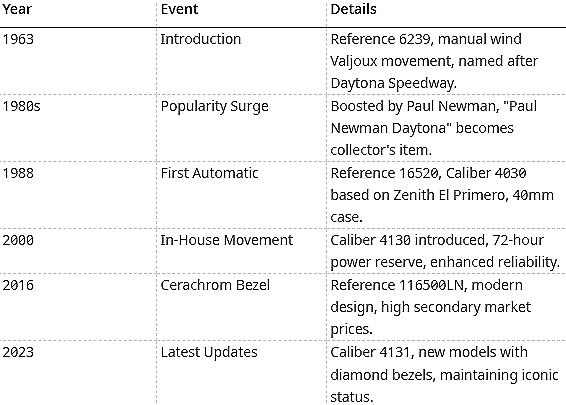The Daytona Diaries: A Watch That Raced from Obscurity to Legend
How a motorsport timepiece outran its humble beginnings to become a collector's obsession.
The Rolex Daytona, one of the most iconic chronographs in horological history, was introduced in 1963, marking a significant chapter in luxury watchmaking. Named after the Daytona International Speedway in Florida, the watch was designed with motorsport in mind, offering drivers a precise tool to measure lap times through its tachymeter scale on the bezel. This connection to racing was not coincidental; Rolex had established ties with motorsport, notably becoming the official timekeeper for the 24 Hours of Daytona race in 1962, enhancing its appeal to racing enthusiasts.
Early Models and Initial Reception
The inaugural model, reference 6239, featured a manual wind Valjoux movement, specifically the Valjoux 72 or its variants, known for reliability. With a case size of approximately 37.5mm, it was housed in steel or gold and included unthreaded pump pushers, limiting water resistance. Despite its functional design, the early Daytona was slow to catch on, with many units languishing on dealers' shelves. Historical accounts suggest that during the 1960s, the watch was not an immediate success, with sales remaining modest compared to other Rolex models, partly due to competition from established chronograph specialists.
The dial of the reference 6239 initially did not feature "Daytona," with the name appearing later, either above the 6 o'clock sub dial or beneath "Rolex Cosmograph" at 12 o'clock, reflecting a gradual branding evolution. Other early references, such as 6240 and 6262, also used manual movements, maintaining the traditional approach until the late 1980s.
Surge in Popularity: The Paul Newman Effect
The 1980s witnessed a dramatic rise in the Daytona's popularity, significantly influenced by actor Paul Newman. Newman, known for his roles in films like "Winning" (1969), where he played a race car driver, was often photographed wearing a Daytona, particularly the reference 6239 with an exotic dial, now famously called the "Paul Newman Daytona." This variant featured a black and off-white dial with a red seconds scale, distinguishing it from standard models. His wife, Joanne Woodward, gifted him the watch after a 1965 accident, with the engraving "Drive Carefully Me," further personalizing its legacy. The watch's auction in 2017 for $17.8 million, setting a record for the highest-priced wristwatch sold at auction, underscored its cultural significance.
This association turned the Daytona into a collector's item, with the "Paul Newman" dial becoming a holy grail for enthusiasts. The watch's fame was not just due to Newman but also coincided with a growing interest in vintage watches, amplifying its desirability.
Transition to Automatic: The Zenith Era
In 1988, amidst the quartz crisis's aftermath, Rolex introduced the first automatic Daytona, reference 16520, marking a significant technological leap. This model featured a modified Zenith El Primero movement, specifically Calibre 4030, which Rolex adapted by reducing its frequency from 36,000 to 28,800 vibrations per hour for enhanced reliability and longer service intervals. The case size increased to 40mm, and it included screw-down pushers and a sapphire crystal, improving durability and water resistance. This era, often called the "Zenith Daytona," saw high demand, with waiting lists extending up to three years, reflecting its cult status.
The Zenith movement, while not in-house, was a strategic choice, leveraging one of the finest automatic chronograph movements available, modified extensively by Rolex to meet its standards. Variants like references 16528 (yellow gold) and 16523 (two-tone) were introduced, expanding material options.
In-House Movement and Modern Era
By 2000, Rolex achieved full vertical integration with the introduction of Calibre 4130, an in-house movement for the Daytona, first seen in reference 116520. This movement, with 44 jewels and a 72-hour power reserve, featured a bidirectional rotor, column wheel, and vertical clutch, enhancing precision and reliability. It also used Rolex's proprietary Parachrom hairspring, resistant to magnetic fields and shocks. The dial layout adjusted, with the small seconds counter moving to 6 o'clock, a subtle but notable change.
This era solidified the Daytona's reputation as a top-tier chronograph, with subsequent references like 116500LN (2016) introducing Cerachrom ceramic bezels, and recent 2023 models, such as reference 126500, featuring Calibre 4131 with the Chronergy escapement, maintaining its legacy.
Current Status and Collectability
Today, the Rolex Daytona is a symbol of precision and prestige, highly sought after by collectors. Its blend of history, design, and engineering continues to captivate enthusiasts, with prices reflecting its rarity and demand. Recent models, including gem-set versions with diamond bezels, cater to luxury buyers, while vintage models, especially Paul Newman variants, command astronomical prices at auctions. The watch's enduring appeal is evident in its association with motorsport and celebrity, ensuring its place as a must-have for serious watch collectors.
This detailed history highlights the Rolex Daytona's evolution from a niche motorsport tool to a global icon, driven by technological innovation and cultural significance.
Key Dates:





